
Jan. 2, 2023
Presidential Honor Guard
This year, and specifically January 1, marks the 30th anniversary of the so-called “Velvet Divorce” when the Czech and Slovak Republics went their separate ways and each became an independent state rather than the previous (since 1992) status as sovereign states within Czechoslovakia. There will be a few related stamps scattered throughout 2023, including a joint issue with Czechia marking the anniversary of the new separate postal systems, with the establishment of the Slovakian Presidential Honor Guard leading things off with a single stamp released on January 2.
Known in Slovak as Čestná stráž prezidenta Slovenskej republiky, the Honour Guard of the President is the official ceremonial honor guard unit of the President of Slovakia, under the direct command of the Military Office of the President of the Slovak Republic. The Castle and Honour Guard Regiment was founded after the establishment of the independent Slovak Republic in 1993. A battalion of the regiment performed the duties of the presidential honour guard. The Castle Guard Battalion was first responsible for Bratislava Castle, then the Primate’s Palace, and from 1996 for the Presidential Palace. A separate unit, the Honour Guard of the President of the Slovak Republic, was founded on August 1, 2001.

The first ceremonial unit, the 318th Guard Battalion, was established in Bratislava on the basis of the order of the Ministry of National Defense of Czechoslovakia on October 27, 1968. In addition to being an honor guard for the leadership of the Slovak Socialist Republic, it also performed guard services for the Communist Party of Czechoslovakia and the Government of Czechoslovakia. After the establishment of the Slovak Republic om New Years Day in 1993, the battalion was transformed into the Castle Guard Regiment, which provided a public duties detachment which would become a separate unit on March 1, 1993. The battalion was transferred to the Primate’s Palace on November 24, 1993, and was moved again to the Grassalkovich Palace in September 1996, where it currently provides guard duties.
The uniform of the company has been employed since June 2003 and was designed by L’ubica Jarjabková and Helena Jurikovičová, based on those worn by Slovak volunteers in 1848. They were actually modelled based on a painting of the national revivalist Giovanni Francisci by Peter Michal Bohúň; this painting appeared on a Czechoslovakian stamp issued on November 29, 1968 (Scott #1591).
This historical uniform of the soldiers of the honor guard, with grey trousers, is based on the colours of the Slovak tricolor and complemented by a hat with a white feather and decorative ornamentation. Based on motifs found within Slovak folk costumes, these ornaments are created with pen and cord. Its exclusivity is underlined by the rich gilding and brown fur on the winter caps and hems of the upper doublet. The wearer’s rank is marked on the doublet with red epaulettes using appropriate insignia. Officers of the Honor Guard are armed with a 985-mm-long ceremonial sword. The blade is made of stainless steel, and is covered with leather. Soldiers of the battalion (mostly NCOs) are armed with a 1080 mm warhead rifle with a barrel and a baton.
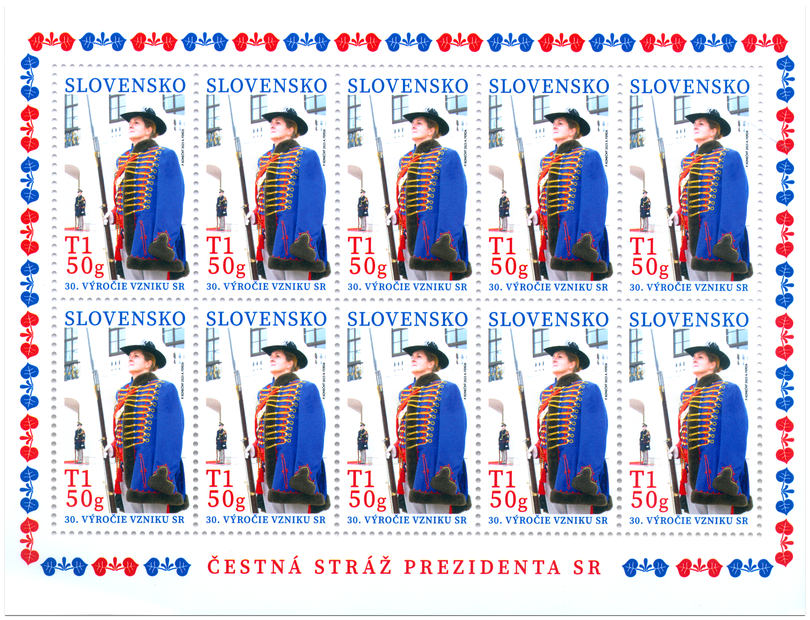
The 2023 stamp commemorating the 30th anniversary of the formation of the Honour Guard of the President of the Slovak Republic was designed by Peter Konečný and Adrian Ferda, It was printed by Tiskárna Hradištko, s.r.o. in sheets of ten stamps using offset lithography. Each stamp measures 27,2 x 44,1 mm and there were 70,000 copies printed. The T1 non-value indicator pays the postage rate for articles up to 50 grams in weight and is equivalent to €1.00 at the time of issue.

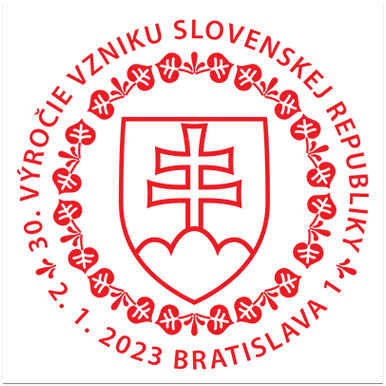
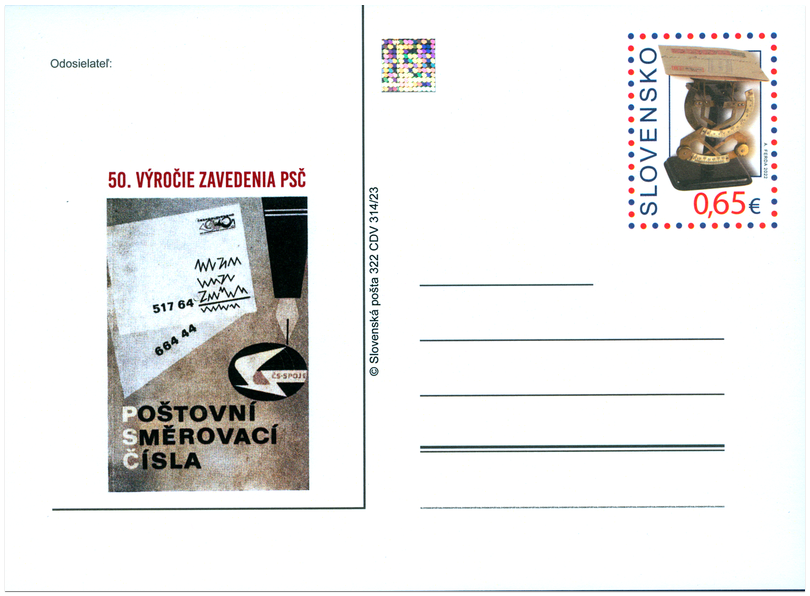
Jan. 2, 2023
Postal Codes 50th Anniversary (Postal Card)
The 50th anniversary of the introduction of the PSČ (Poštové smerovacie číslo) or postal routing number in Slovakia was commemorated with the release of a postal card on January 2. Postal codes in Slovakia use the old system of Czechoslovakia which were introduced in 1973 and remain unchanged. The postal code consists of five digits, usually written with a space in the form XXX XX. The first digit indicates a region:
8 – the capital of Slovakia, Bratislava. The second digit represents one of the five districts of Bratislava. The codes 860 01-899 99 are not assigned to any region and serve for internal purposes of the postal system.
9 – southern and western Slovakia: 911 01 Trenčín, 917 01 Trnava, 949 01 Nitra, 960 01 Zvolen, 974 01 Banská Bystrica, 984 01 Lučenec
0 – northern and eastern Slovakia: 010 01 Žilina, 036 01 Martin, 040 01 – 044 99 Košice, 058 01 Poprad, 071 01 Michalovce, 080 01 Prešov).
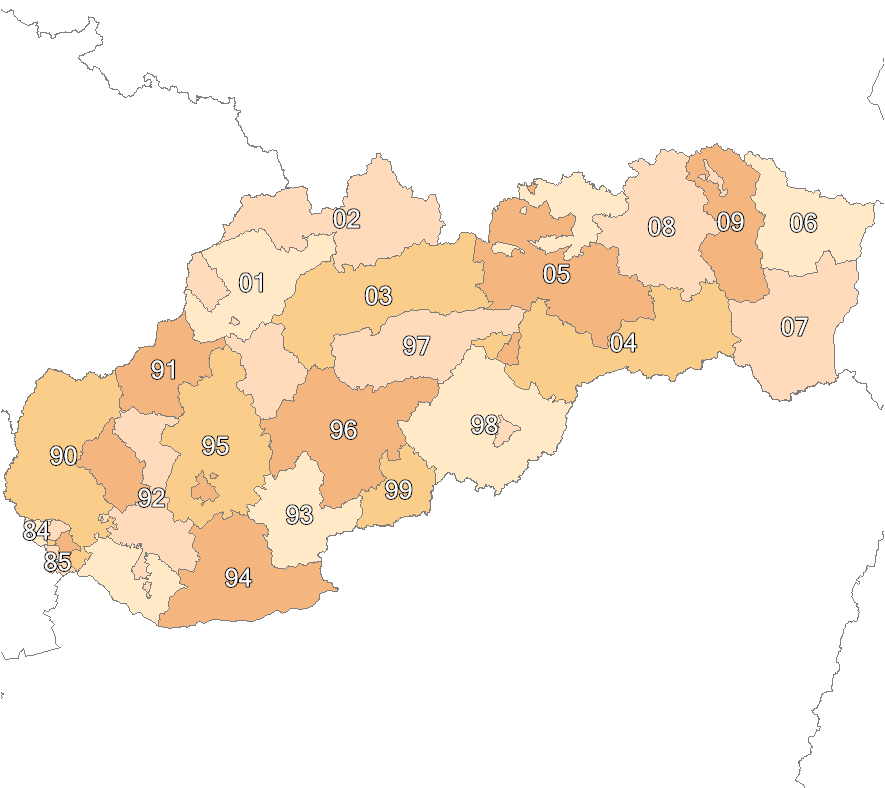
Regions 1 to 7 were reserved for the Czech Republic, and are located there. The postal codes of Slovakia and Czech Republic do not overlap.
When writing the address, the postal code is put in front of the town name; when typed or printed, 1 space separates the leading 3 digits from the trailing 2 digits, and 2 spaces separate the postal code from the town name, e.g.:
Kúpeľná 1/A
811 02 Bratislava 1
On envelopes and postcards there are usually five rectangular boxes below the address field for the postal code digits. On postal items being sent from abroad it is recommended to prepend the postal code with the ISO 3166-1 two-letter code of the country and a dash:
Kúpeľná 1/A
SK-811 02 Bratislava 1 Slovakia
The postal card and first day cancellation were designed by Adrian Ferda who designs most of the cards and pictorial postmarks for POFIS. The imprinted stamp has a denomination of €0.65 but the card sells for €0.75. There were 1,200 printed.


Jan. 27, 2023
Krista Bendová
POFIS will release a single stamp on January 27 to honor the birth centenary of Krista Bendová who was a Slovak poet, prose writer, journalist and playwright, best known as the author of books for children and young people. She was the wife of the Slovak writer Ján Kostra. She wrote under several pseudonyms including Ján Koval, Kristián Benko (together with Ján Kostra), and Mária Hlavatá.

Bendová was born on January 27, 1923 in the village of Kráľova Lehota, Liptovský Mikuláš District in the Košice Region of eastern Slovakia, the daughter of railway official Boris Oldřich Benda and Kristína Bendová, née Čimborová. She studied in Kráľová Lehota, Kremnica, Nové Zámky, later continued her education at the gymnasium in Banská Bystrica. After graduation, she transferred to the Faculty of Arts of the Slovak University where she studied Slovak and Russian. At the same time, she also studied at the Academy of Drama in Bratislava but for health reasons she interrupted her studies in 1945 and did not finish. She underwent a rather lengthy treatment and after 1948 she began working in the Pravda publishing house and the Union of Slovak Writers. Later, she was briefly editor of the magazines Ohník and Roháč, and of the daily Pravda from 1958 until 1964. She then devoted herself only to writing and was awarded the title of merited artist in 1983.

Her work was based on the poetry of Ján Smrek and Emil Boleslav Lukáč. Bendová made her book debut with a collection of love-reflective lyrics called Letters to a Beloved (1948). She soon became primarily an author for children between the ages of 5 and 16 years old. This included books of children’s poetry as well as prose work for children. Her most successful work was the humorous Monkeys from Our Shelf (1967). In addition to her own work, she also devoted herself to translations from Soviet and Czech literature.
Designed by Natália Ložeková, the stamp depicts Krista Bendová’s portrait painted on a blackboard using chalk. The motif of the stamp was inspired by the collection of poems Once Upon a Time. The titular poem tells the story of pupils who stole pieces of chalk and hid them in their pockets. The FDC was inspired by the poem About a Fallen Pear (O spadnutej hruške), showing the pear as a jackanapes. The stamp was printed by Tiskárna Hradištko, s.r.o. in sheets of 50 stamps using offset lithography. It measures 26,5 x 33,9 mm and has a denomination of €1.00.




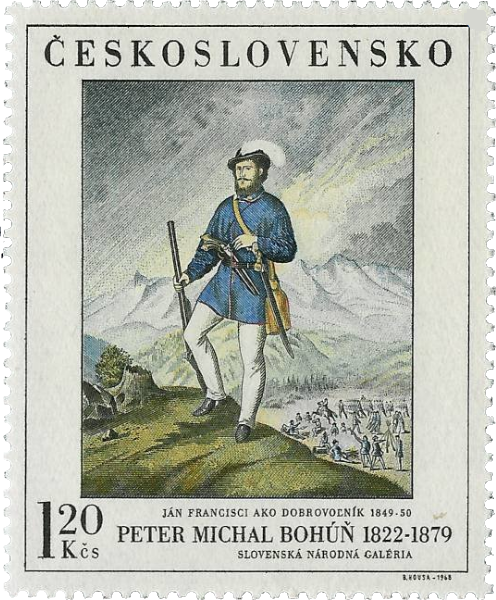

Leave a comment